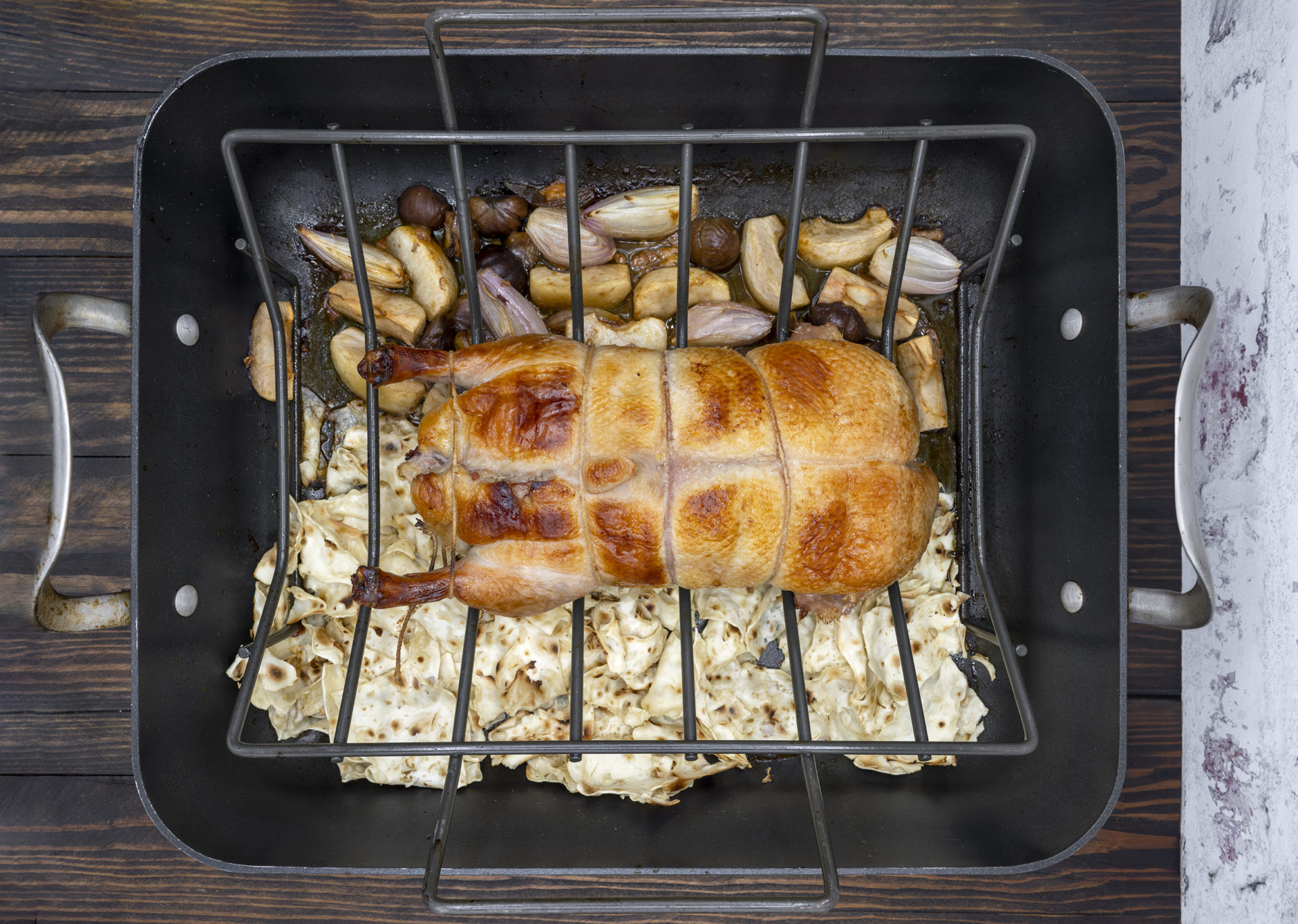Saint Martin of Tours is best known for cutting his cloak in two with his sword, to give half to a beggar clad only in rags in the depths of winter. While many paintings and stained glass windows illustrate this noble action, they ignore a more comical episode from his life. According to legend, not wanting to be made bishop of Tours (because he preferred to live in poverty), the holy man hid in the middle of a flock of geese, which betrayed his presence by their honks. In retaliation or simple commemoration, goose has become the pièce de résistance of the festive meal of Saint Martin, on the 11th of November, in many European countries. This date conveniently coincides with the arrival of new wine, which only makes the celebration more cheerful.
To this day, Slovenia celebrates Martinovo by savoring the new vintage and a roast goose, served with red cabbage and mlinci. The latter, a specialty from Croatia and Slovenia that’s halfway between matzah and pasta, serves as the preferred accompaniment for poultry; soaked in sauce, mlinci also fill the roasting pan of the Christmas turkey.
In practice, goose often has tight flesh that’s not particularly tender. Roast it, and the breast will be overcooked while the legs will be tough as rubber. As hard as I’ve tried, I still haven’t found any satisfactory solution. So we’ll be cooking a Saint Martin’s duck for tenderer and tastier flesh. For the garnish, I’m sticking with the classics: shallots, apples, chestnuts, plus the traditional red cabbage and mlinci. Finally, to make carving easier during service, I debone the raw duck and stuff it with the same ingredients as I use in the garnish, with added boudin blanc or bratwurst. Never mind that as far as I’m aware, nobody’s ever tried to hide in a flock of ducks.
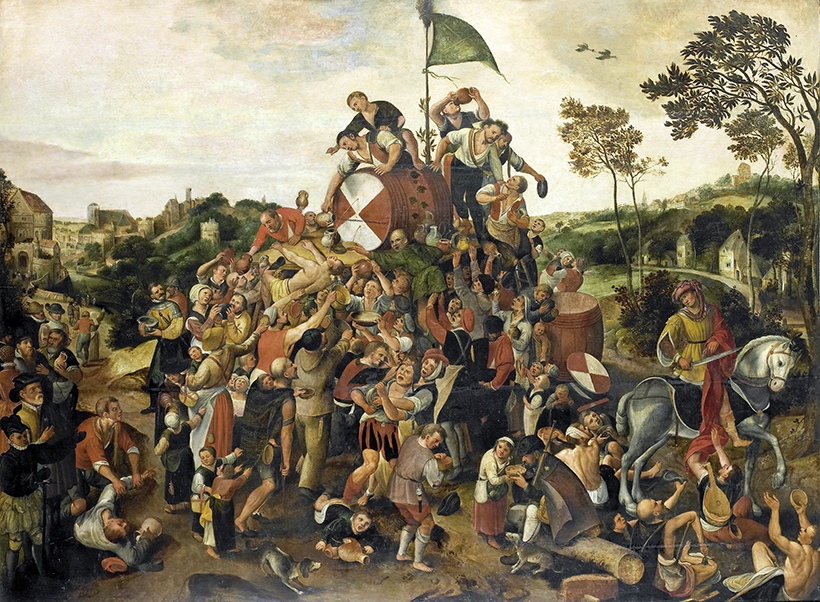
Saint Martin’s duck and mlinci
Yields 6-8 servings
Total preparation: 16 hours
Active preparation: 2 hours 15 minutes
Mlinci
200 g AP flour, plus some for dusting
2 g salt
25 g (about 1/2) egg, beaten
65 g water, lukewarm
- Place the flour and salt in the bowl of an electric mixer fitted with the paddle attachment. Add the egg and water, and mix on low speed for 5 minutes, pausing around midway through to scrape down the walls of the bowl with a spatula.
- Shape the dough into a ball, wrap in plastic film, and let rest for at least 30 minutes.
- Using a pasta machine, roll the dough to the thinnest setting, cut into rectangles of about 14 cm x 20 cm, and keep on a baking tray lined with parchment paper; you should have 8-9 rectangles (the shape doesn’t need to be precise). Prick each piece with a fork at regular intervals, and let dry for 10-15 minutes.
- Heat one or more non-stick pans over medium heat. Proceeding in batches, cook each piece of dough (without any oil or fat) on both sides until golden brown air bubbles have formed. Reserve on a baking tray.
- Let the mlinci dry on the tray for at least 12 hours. Once dry, they can be kept in a plastic bag for a few days.
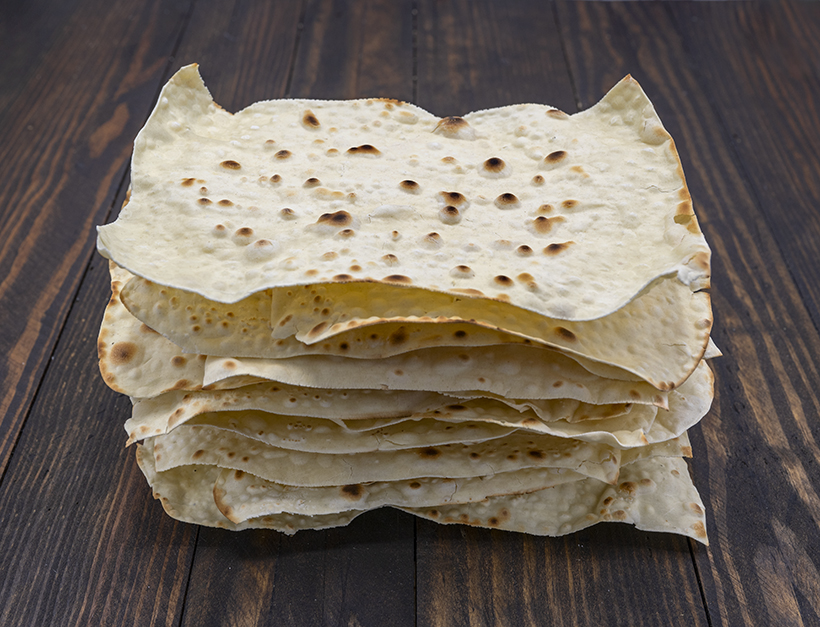
Duck fabrication
1 whole duck, about 2.5 kg
- Pat the duck dry with paper towels. Cut off and reserve the neck and the first two joints of the wings.
- Position the bird on its breast, and separate the meat from the carcass, starting from the middle and dislocating the thigh and wing bones as you progress outwards. Once you’re finished, the breast, legs, and wings should still be attached together as one. For each wing, remove the remaining bone and the meat attached to it (which tends to be quite tough) by cutting a small hole through the skin around the head of the bone. For each leg, separate the thigh from the drumstick at the joint, and set the thigh bone free by scraping between the bone and the meat.
- Wrap the boned duck loosely in butcher paper, and refrigerate for at least 2 hours.
- The neck and wing joints will be used below to flavor the jus. The carcass and other bones can be discarded, or they can be used to make a duck stock as a replacement for the chicken stock used below (follow a typical chicken stock recipe, simply replacing chicken with duck).
Stuffed duck
35 g brioche, crust removed
65 g milk
110 g peeled, cored Fuji apple, medium dice
80 g peeled shallots, small dice
30 g butter
65 g hard cider
200 g boudin blanc (or bratwurst), smashed with a fork
65 g raw foie gras, medium dice
50 g peeled roasted chestnuts, quartered
2.5 g salt
2 g sweet paprika
25 g egg (about 1/2), beaten
boned duck
- Tear the brioche into 1 cm pieces and place into a bowl. Add the milk, and let sit for 10 minutes, stirring a couple times to make sure all the pieces are soaked.
- Meanwhile, in a saucepan over medium heat, sauteé the apple and shallots in the butter until they start to color. Add the cider and reduce à sec. Transfer to a bowl and let cool to room temperature.
- Squeeze the milk out of the brioche pieces. Discard the milk and add the brioche to the bowl with the apple and shallots. Add the boudin blanc, foie gras, roasted chestnuts, salt, paprika, and egg. Combine with a spatula.
- Spread the boned duck open on a board. Place the boudin blanc stuffing in the middle of the bird (between the two breasts), and shape like a log. Add a little bit of stuffing in the areas where there is little to no meat (for example in the holes caused by the removal of the wings). Wrap the duck around the stuffing with a small overlap. Tie together with butcher’s twine, then refrigerate uncovered for at least 2 hours, up to one day.
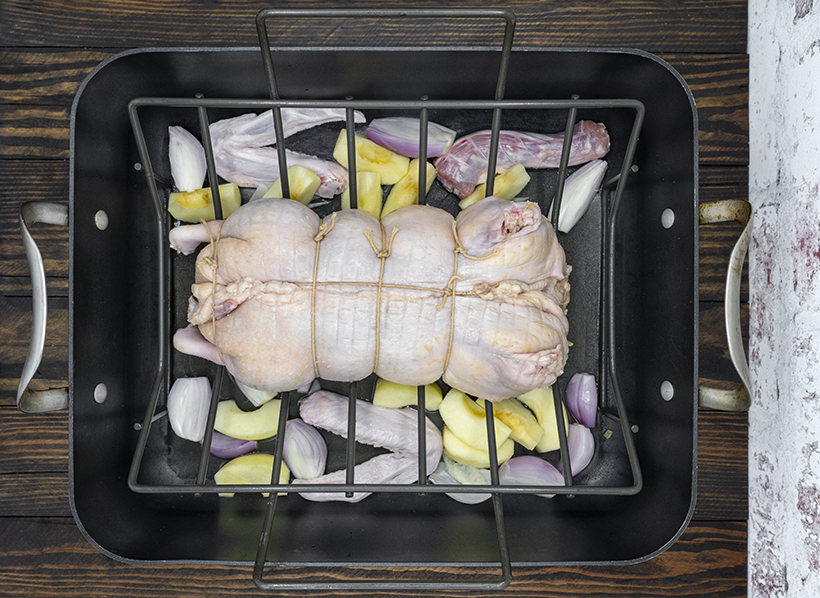
Braised red cabbage
120 g peeled red onion, small dice
50 g butter
1 g ground cumin
0.5 g star anise
20 g sugar
350 g red cabbage without ribs, cut into thin strips
100 g peeled green apple, grated
1.8 g salt
black pepper, ground
65 g red wine
100 g red port
130 g chicken (or duck) stock
- In a pan over medium heat, sauté the onion in 1/3 of the butter until soft. Stir in the cumin and star anise, cook for a minute, then add the sugar, and let caramelize for another minute or so.
- Add the red cabbage, apple, and remaining butter, and stir well. Season with salt and pepper, and cook for 5 minutes, stirring regularly.
- Add the red wine and port, and simmer for 10 minutes.
- Add the stock, cover with a lid ajar, and braise over low heat for about 1 hour, until very soft.
- Take the lid off, and cook for 5 more minutes over medium heat to caramelize. All the liquid should be gone now.
- Transfer to a bowl, let cool, and refrigerate. The cabbage can be kept for a couple days.
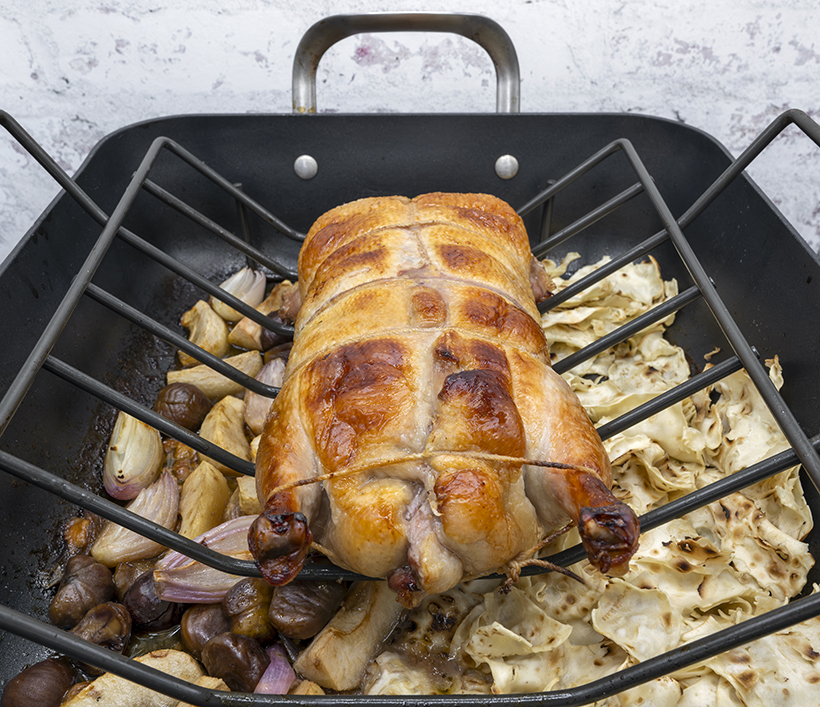
Roasted stuffed duck
stuffed duck
15 g canola oil
2 g salt
250 g hard cider
280 g peeled shallots halved or quartered
350 g peeled seeded Fuji apples, quartered
about 750 g chicken (or duck) stock
150 g peeled cooked chestnuts
mlinci
15 g butter
- Place the stuffed duck on a rack over a deep tray. Boil some water in a kettle, then gently pour it over the entire duck skin, on both sides of the bird; the skin will tighten and look smoother. Discard the water, pat the duck dry with paper towels, and let sit at room temperature for 1 hour.
- Brush the duck with canola oil and season with salt on all sides. Transfer to a rack in a roasting pan, and add the cider, shallots, apples, and the neck and wing joints reserved from the duck fabrication. Roast in a 200 C / 400 F oven using the convection function, for 25 minutes.
- Take the roasting pan out of the oven and flip the duck on the rack. Add about 100 g of stock, return to the oven, and cook at 175 C / 350 F (still using convection) for about 35 minutes, until the internal temperature of the meat reaches 51 C / 125 F. It can be hard to assess the exact time needed, so be prepared to add a little more time. Add up to 150 g stock if the pan starts to run out of liquid.
- Take the bird out of the oven, and let rest for 5 minutes. Remove and discard the neck and wing joints. Take out about 3/4 of the cooking jus, and use a fat separator to reserve the fat and the degreased jus in different containers. Push the apples and shallots to one side of the roasting pan, and add the chestnuts to them. Reserve.
- Break the mlinci into smaller pieces, about 5 cm x 5 cm (irregular shapes are OK), and place into a large dish. Bring 500 g of stock to a boil, and pour over the mlinci. Let soak just long enough to soften, tossing a couple times.
- Once the mlinci are soft, strain the stock and reserve. Transfer the mlinci to the empty half of the roasting pan, and toss in the remaining jus. This is a good place to pause until everyone is ready to eat.
- Cook the duck in the oven (still at 175 C / 350 F using convection) for another 10 minutes, to an internal temperature of 57 C / 135 F.
- Meanwhile, in a saucepan over high heat, reduce the strained stock and the reserved degreased jus to about 90 g. Whisk in the butter and about 15 g of the reserved fat. You can keep the rest of the fat for another recipe (to fry potatoes, for example).
- Broil the duck for a couple minutes to brown the skin some more, then take out of the oven. Present the dish to your guests, and leave it to rest for 5 minutes before proceeding with assembly.

Assembly
braised red cabbage
roasted stuffed duck (with sauce)
- Reheat the braised red cabbage in the microwave.
- Transfer the duck from the roasting pan to a cutting board, cut off the legs, and cut the rest of the roast into slices about 2 cm thick.
- Place a slice of duck (or a leg with a little bit of stuffing) in the center of each serving plate. Add some red cabbage, mlinci, roasted apples, shallots, and chestnuts around. Spoon some sauce onto the meat. Serve immediately.

